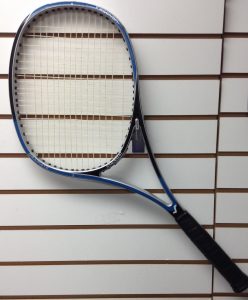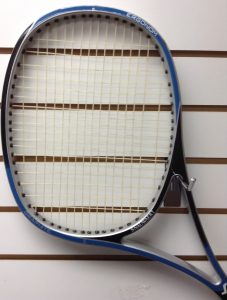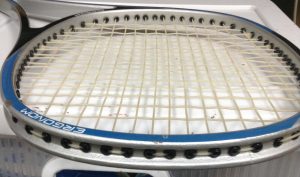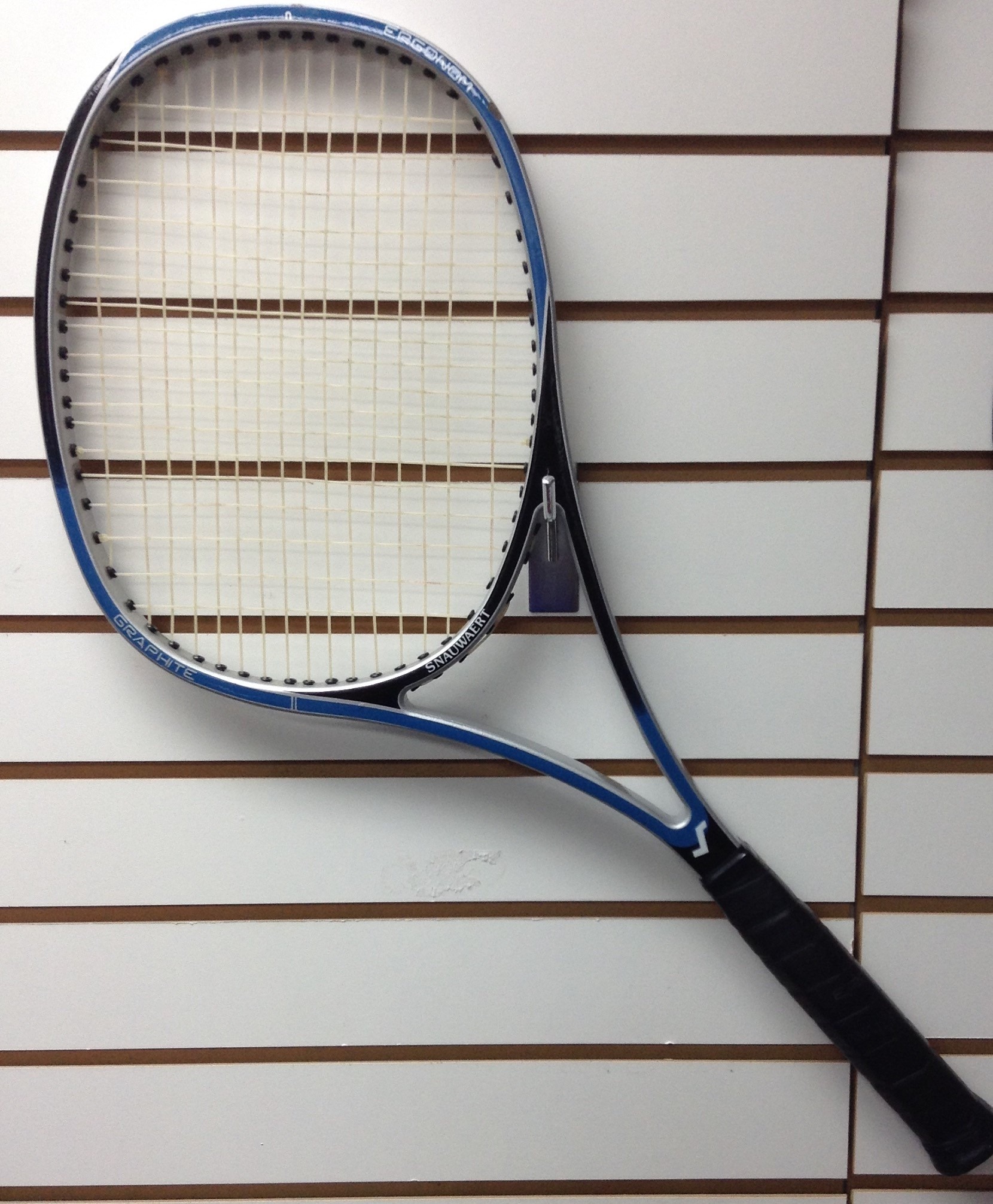Snauwaert Ergonom Analysis and Review

A lot of IART members aren’t as old as I am, and may have missed some of the more “interesting” racquet designs of the past, and how they may (or may not) have paved the way for present technologies. One that did not, in my opinion, but always seems to gather a lot of curiosity, is the Snauwaert Ergonom.
Distinguished by its offset head (42 degrees “offline” from the shaft), the Ergonom was designed by tennis enthusiast and entrepreneur Carlo Gibello to identify the most ergonomically correct way to attach the racquet head to the shaft, allegedly keeping it in line with the ball for a longer time to (I guess) improve shot placement.
From its debut in 1983, it generated tremendous curiosity (if not sales), and placed Snauwaert in the public eye.
Specifications
Remember that this was the early 1980s, and racquets were much heavier than they are today, and you’ll understand that the Ergonom had specs in line with a lot of the market. Today, however, it’s a club.
My personal Ergonom has a strung weight of 372 grams (13.1 oz.), balance of 33 cm (13”) from the handle (4 points head light for its 27”length), and a “strong” swingweight of 343 kg/sq cm. This would be over 1/2 ounce heavier than a Wilson Pro Staff RF 97, to put a more modern reference to it. In short, you need to be strong as an ox to swing this thing. A friend of mine, who is a really accomplished player, used it for about 10 minutes and gave up, exhausted.
I found no reference to its headsize, but it looks to me to be no more than 85 square inches, a “true” midsize frame.
midsize frame.
In Play
This was actually an interesting, fun playtest, as the Ergonom had some quite good qualities, and some that were terrible (BTW, you have to hold it “head-up” (as you see it in the picture), rather than “head-down”). From the baseline, it was actually pretty good once you got past the weight. The head lined up quite well regardless of spin (but was particularly good on slice and flat shots), producing well-controlled groundstrokes with more than adequate power. The weight did challenge my stamina, and I was actually happy to end this portion of the test.
The Ergonom’s best play was at net, as the head lined up perfectly for all kinds of volleys, providing strong depth and, when needed, a deft touch thanks to its narrow-beamed flexibility.
The design’s weakness was exposed on serves and overheads, as I was never able to feel comfortable lining up the racquet head with the ball. I suppose I might have gotten better with practice, but I also feel the Ergonom was not developed with serving as a major concern. The 16×18 string pattern felt pretty normal, and gave adequate access to spin.
Fine Points
The Ergonom was developed before bumper guards became commonplace, and it wouldn’t take very much hard net play to wear through the head of the frame (we used a lot of racquet head tape in those days). It also came with individual, double-flared grommets and the then-standard leather grip.
In Conclusion
The Snauwaert Ergonom was a unique-for-its-time racquet designed that did spawn some later copycats (X-45 and Snauwaert’s own, more offset Ergonom 2, for example). Even though it didn’t sell well — in fact, there may be, according to my research, more unused “collector” models around than ones that have been played with — it did push the envelope in design possibilities for its time. If you get a chance to try one, you should take it. But do your arm a favor and make it a short test.


Leave a Reply
You must be logged in to post a comment.